Habitat for Humanity and CPA: Highlighting Successful Housing Partnerships
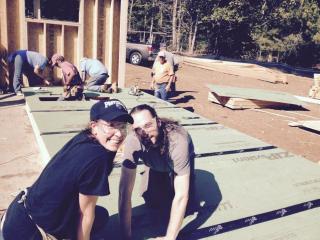
Written by Chase Mack
For many CPA communities, Habitat for Humanity is an invaluable partner when it comes to affordable housing goals. The global nonprofit works in nearly 1,400 communities across the United States, and in Massachusetts, many of their local efforts have been made possible through Community Preservation funds. To learn more about partnering with Habitat, find your local chapter using this search function on the Habitat website.
Collaborations with organizations like Habitat are becoming more frequent to create new Community Housing. Habitat for Humanity focuses on important, community goals, including affordable homeownership, sweat equity, and volunteer participation. Much like the Community Preservation Act, a key element that defines many successful Habitat projects is local involvement, making the two a perfect match. Below are some highlighted projects that demonstrate successful partnerships between Habitat for Humanity and CPA.
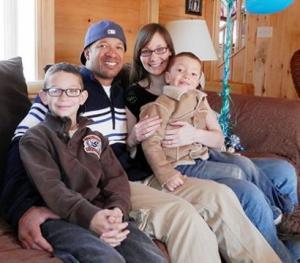 West Tisbury
West Tisbury
Community Preservation Act funds helped a family of four secure permanent affordable housing on Martha’s Vineyard. Over $225,000 in West Tisbury CPA funds have gone toward the development of three houses on Bailey Park Road in West Tisbury, jointly developed by the Island Housing Trust and Habitat for Humanity of Martha's Vineyard. According to Doug Ruskin, Co-President of the Martha's Vineyard Habitat for Humanity, significant funds have come from CPA in the development of several of Habitat’s houses on the Island: "CPA funds have been a major boon to affordable housing Island-wide in the last five or six years," he said.
The Thomas family was selected to move into the home and had previously been living in a run-down, older rental that had not been maintained by the owner. "Anything that needed to be done we had to pay for ourselves," described Albert Thomas. Albert and his wife Ariel both grew up on the Island and graduated from the Martha's Vineyard Regional High School. The family of four was able to move into the home in February of 2013.
This was the second house of three that Habitat planned for the Great Plains Road area. Described as a kit house, the home was designed to be economical, energy efficient, and comfortable, according to Habitat Co-President, Greg Orcutt. The house was assembled by volunteers and the Thomas family. As part of a community partnership, Habitat makes sure the costs fit the homeowners' ability to pay. The owners usually buy the house with a 20-year no-interest mortgage that Habitat holds. The cost of the home is derived from a formula that ensures the cost of home ownership does not exceed 25 percent of the owners' gross income, according to Mr. Ruskin.
The land that the home sits on is owned by the Island Housing Trust and leased to the home owner for $50 per month for 99 years, ensuring that the house will always remain in the affordable housing pool. If the homeowners choose to sell in the future they will receive whatever equity has accrued and the next buyer must qualify as an affordable housing homeowner.
Northborough
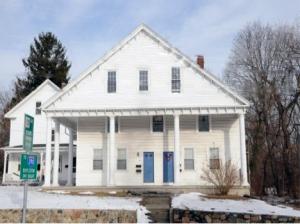 33-39 Main Street in Northborough is an example of re-purposing an existing building into affordable housing using CPA funds. The town approved $400,000 in CPA funds and two historic homes on Main Street were chosen to be renovated into four condominium units. One of the buildings will be converted into separate 2 bedroom units, while the second, larger building will be converted into a 3 bedroom unit and a 5 bedroom unit. Located across the street from the town library, the units will be designed for local families, with one condo specifically dedicated for a veteran family.
33-39 Main Street in Northborough is an example of re-purposing an existing building into affordable housing using CPA funds. The town approved $400,000 in CPA funds and two historic homes on Main Street were chosen to be renovated into four condominium units. One of the buildings will be converted into separate 2 bedroom units, while the second, larger building will be converted into a 3 bedroom unit and a 5 bedroom unit. Located across the street from the town library, the units will be designed for local families, with one condo specifically dedicated for a veteran family.
The exteriors of the buildings, one of which dates back to the year 1800, will be maintained as the local Habitat chapter works to bring the building up to current code and fitted with energy efficient materials. As of January 2017, the interior demolition is complete in the smaller house, and students and faculty from the Assabet Regional Vocational Technical High School are doing the renovation work. Interior demolition is underway in the larger house as well, and Habitat volunteers will be working on the renovations.
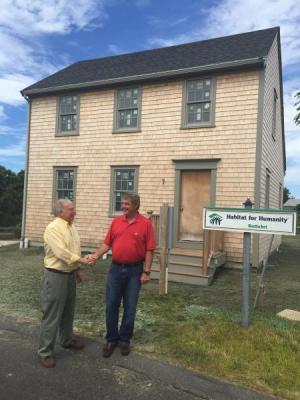 Nantucket
Nantucket
In Nantucket, Sachem’s Path is a housing development sponsored by Housing Nantucket, the Nantucket Housing Authority, and the local Habitat for Humanity Nantucket, incorporating 40 homes of varying affordability from different funding sources. Among these homes, Habitat Nantucket has just finished building the first of three houses using CPA funds and will begin work on their second this spring.
The first completed home in the development, 7 Wappossett Circle, is a 2 bedroom house that began construction in early 2016 after the town approved $250,000 in CPA funds for the project. A young couple was selected for the home just a few weeks after the project began. “Affordable housing on Nantucket is and has been a critical issue for a while” described Joseph Grause, President of the Habitat Nantucket. Due in part to its prominence as a vacation hotspot, Nantucket’s real estate prices are among the highest in the commonwealth. “It’s very difficult for people who fall into affordable categories to find housing, let alone own a home,” Grause said. “Because of this, the town and Habitat have been working to increase our stock of affordable housing.”
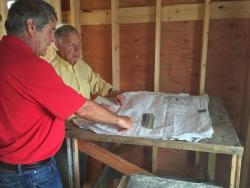 The housing development on Sachem’s Path is a step towards curbing this issue, with 16 homes planned for completion during the first phase, and another 24 homes scheduled for the second phase beginning later this year with another allocation of $250,000 in CPA funding. Grause goes on to describe the relationship that their organization has had with the local CPA committee: “It’s been absolutely critical for us—in the five years I’ve been on the board, they’ve given 85% of our funding. I think there are a lot of worthy organizations that they direct funds towards and we’ve been fortunate to have been awarded those CPA grants and successful at putting the money to use.”
The housing development on Sachem’s Path is a step towards curbing this issue, with 16 homes planned for completion during the first phase, and another 24 homes scheduled for the second phase beginning later this year with another allocation of $250,000 in CPA funding. Grause goes on to describe the relationship that their organization has had with the local CPA committee: “It’s been absolutely critical for us—in the five years I’ve been on the board, they’ve given 85% of our funding. I think there are a lot of worthy organizations that they direct funds towards and we’ve been fortunate to have been awarded those CPA grants and successful at putting the money to use.”
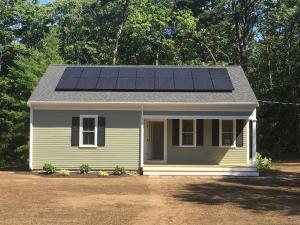 Barnstable
Barnstable
For this project, as with all Habitat for Humanity of Cape Cod homes, Habitat used their tried-and-true “sweat-equity” model. With this model, purchaser-families partner with Habitat and devote 250 to 500 hours building their homes alongside community volunteers. This promotes homeowners who are well educated on building and maintenance, and fosters pride in homeownership and a true sense of community.
In the Sesame Street project, Habitat purchased the 2+ acre parcel from a market rate seller, then used the Comprehensive Permit process, Massachusetts General Law Chapter 40B, to subdivide and create two modest-sized buildable lots. Using $100,000 in CPA funding, Habitat was able to create two single family, 3 bedroom units. In addition to creating the two buildable lots, Habitat also created a third, open space lot of over an acre. This lot contained wetlands, was adjacent to sensitive conservation areas, and was possibly home to endangered turtles. Habitat worked with the local Land Trust and deeded this land to them for stewardship.
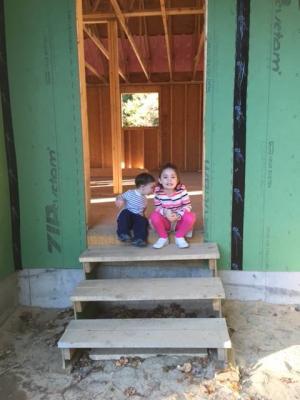 Sesame Street, as well as being a collaboration between housing and open space, was also part of Habitat for Humanity’s pilot program for the installation of solar panels. Here, Habitat worked with the Cape Light Compact (CLC), a municipal aggregator, to create a “forward minting program” which gave CLC an assignment of the SRECs (Solar Renewable Energy Certificates). The SRECs are an incentive for solar, and provide a cash flow over years. With the forward minting program, CLC, in exchange for the SRECs, provided Habitat with an upfront payment. This upfront payment, combined with other grants and rebates, fully funded the solar panels. Habitat’s Sesame Street buyers were able to affordably purchase houses that reached near-net-zero, meaning the homes produced almost as much energy as they used. Without the support of the Barnstable Community Preservation Committee, this land would not have been acquired.
Sesame Street, as well as being a collaboration between housing and open space, was also part of Habitat for Humanity’s pilot program for the installation of solar panels. Here, Habitat worked with the Cape Light Compact (CLC), a municipal aggregator, to create a “forward minting program” which gave CLC an assignment of the SRECs (Solar Renewable Energy Certificates). The SRECs are an incentive for solar, and provide a cash flow over years. With the forward minting program, CLC, in exchange for the SRECs, provided Habitat with an upfront payment. This upfront payment, combined with other grants and rebates, fully funded the solar panels. Habitat’s Sesame Street buyers were able to affordably purchase houses that reached near-net-zero, meaning the homes produced almost as much energy as they used. Without the support of the Barnstable Community Preservation Committee, this land would not have been acquired.
Habitat’s mission is to work in partnership with families in need to build hope, homes, lives and community. Habitat strives to make homes welcome in a neighborhood and to be good neighbors, working to create a collaborative spirit where a whole community can be actively involved in helping to address the affordable housing crisis.

